The saying goes ‘You never really know a man until you’ve walked a mile in his shoes’. Well, one of the Visit Colchester team took an hour or so on a sunny Sunday getting to know the Ancient Romans a little better right here in Colchester on a mile (actually a 1.5 mile) walk around the town centre.
Our walk started at Firstsite. This would have been the site of a residential area in Roman Colchester. Inside, Firstsite has a fine example of a Roman mosaic laid under a glass floor – it sits almost exactly in the same spot that it was discovered in by a Victorian archaeologist and is believed to be the floor of a dining room which would have been part of a large, wealthy home.
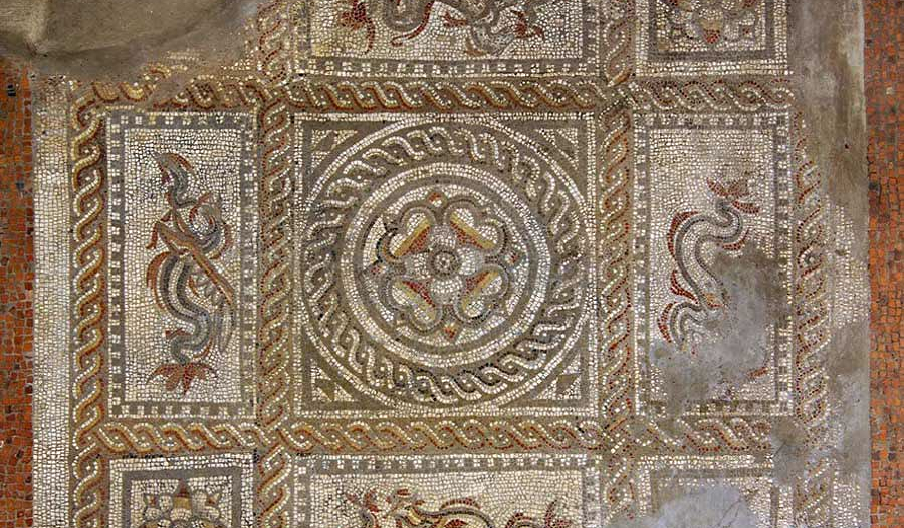
We took a 2 minute walk from Firstsite to Colchester Castle – now a Museum & imposing Norman Keep, it is built on the foundations of the Roman Temple of Claudius, which was built in 54AD. When the Museum is back to business as usual, you can take a tour of the foundations of the Temple which lie underneath the Castle, and the Museum itself is full of artefacts discovered locally from the Roman period, and beyond.
A short walk through Castle Park and out into the Dutch quarter, we found the foundations of the Roman Theatre on Maidenburgh Street. You can see the remains through a plate glass window set within a row of houses. The Roman townspeople would have come here for entertainment, and it's capacity would have been about 3,500 people. Dark bricks are laid in the street to help you gauge what kind of size the theatre was. This part of Roman Colchester would have been positively buzzing with activity.
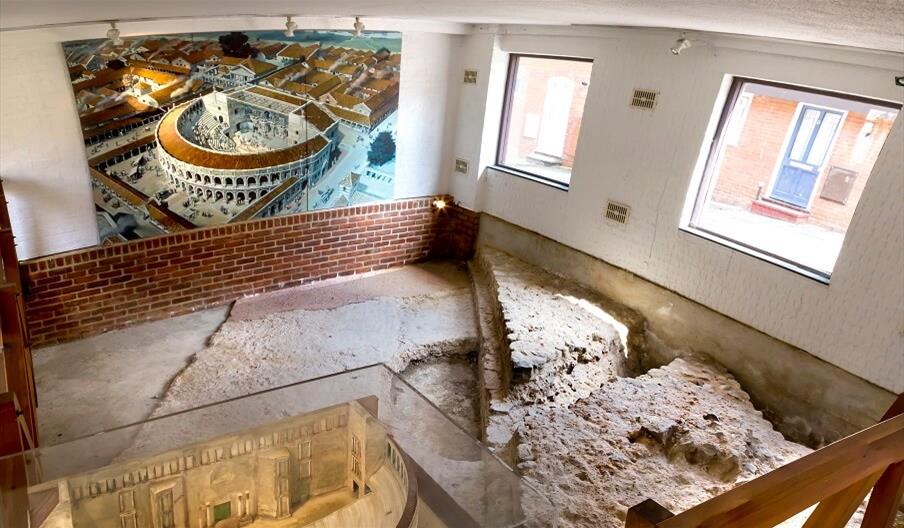
Up the hill and on to the High Street heading west, we passed the Fenwick store. Now selling luxury goods, during a fairly recent archaeological dig on this site, a collection of similarly luxurious gold and silver jewellery was discovered, which is now on display inside the Castle Museum. These items would have belonged to very wealthy people and were buried under the floor of their home for protection prior to the Boudiccan revolt of 60AD. The family that buried them never managed to recover their hidden treasure.
We carried on west (along the side of the aptly named Centurion pub and past the Mercury Theatre, named after the Roman god of Communication), to the Balkerne Gate. This is the oldest surviving Roman gateway in Britain. The experience of walking through this archway could be described as ‘time travelling’. The gateway would have been very grand in its heyday with two very large central archways – what we walk through today was just a pedestrian footway to the side. It would have been the main entrance into the town throughout the Roman period. You can almost hear the clatter of footsteps and hooves as you pass through.
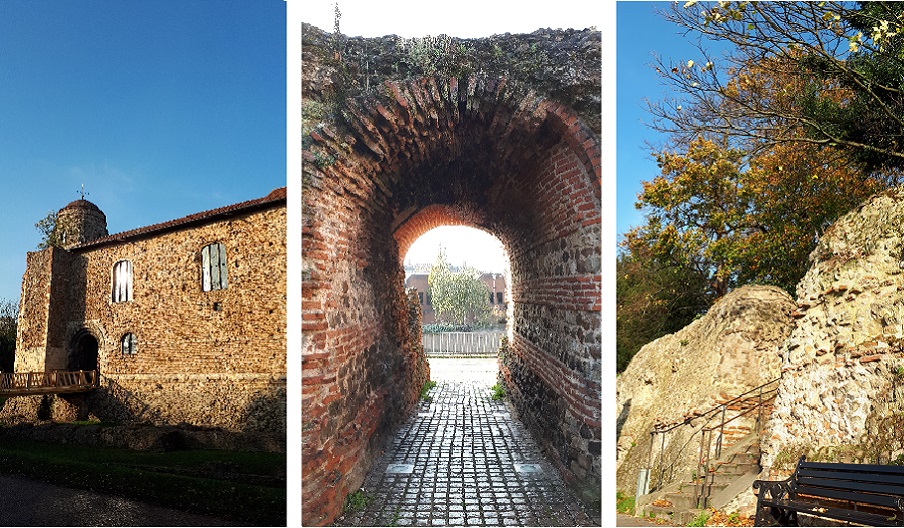
Heading south, we walked along the outer side of the Roman wall. This is one of the best preserved parts of the wall, and it is almost at its full height. Here you can admire the decorative ‘stripes’ of Roman brick and try to imagine it when it was newly built. Heading up a small flight of steps through the wall on the left takes us onto Church Street & and at the end of the street, a turn right onto Head Street led us to the subway under Southway.
We took note of the 1970s’ mosaic & concrete artwork depicting Roman coins, and on the other side of the busy road, found the remains of the Roman Church next to the Police Station. The remains of this building date back to the 4th Century and is possibly the earliest known Christian Church in Britain.
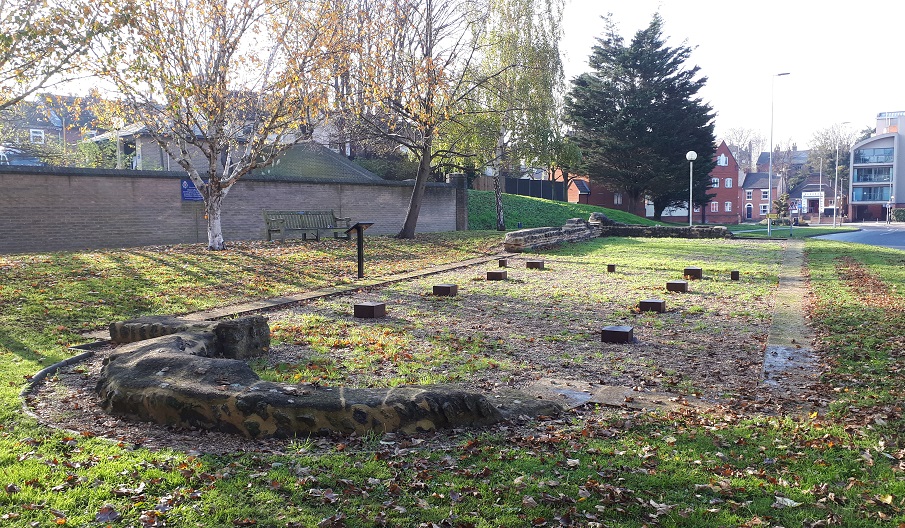
We walked back around the Police Station (I don’t recommend a visit here!) and took a brisk 0.2 mile walk south down Butt Road. A zigzag through a new housing estate on Le Cateau Road took us to the site of the Roman Circus chariot racing track. Little of the track remains, but there is evidence here of the starting gates, which have been partially recreated. The Circus would have seated around 8,000 spectators (for comparison, our local present day football stadium holds 10,000) – imagine the roar of the crowd in this now quiet residential area! A Visitor Centre full of interpretation and temporary exhibitions is here too, I heartily recommend a visit when it re-opens.
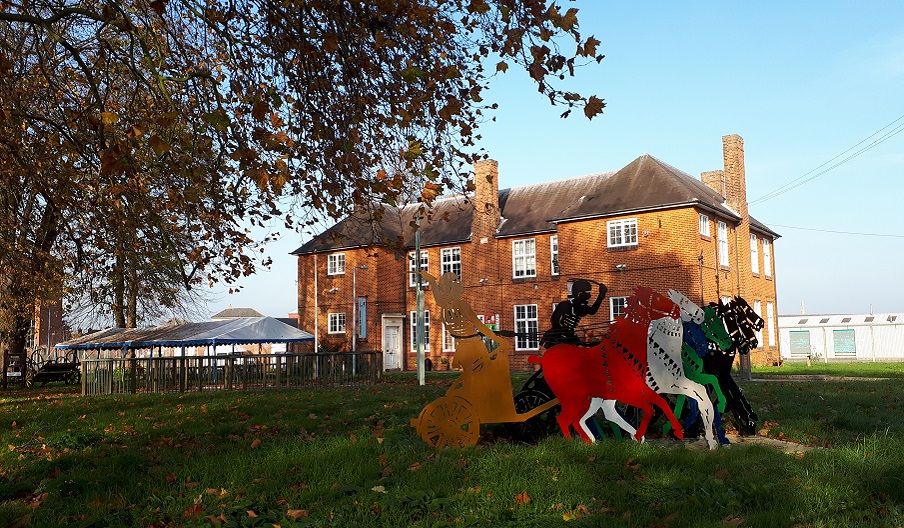
Although this walk would have been greatly enhanced by attractions & museums being open to the public, it was pleasant enough to take during lockdown just as a walk on its own.
If you decide to follow in the footsteps of the Romans - we would love to see photos of your walk, share them on social media and don't forget to tag @visitcolchester!
For more information on this route, and other walking routes in Colchester town centre, and out into our Beautiful Borough, contact the team or take a look at our Walking & Cycling webpage for inspiration.






Writing for different <a href="https://essaywriter.org/term-paper-writing-help";>term paper writing help</a> genres requires an understanding of the genre's conventions, tropes, and expectations. Writers should do their research, read widely within the genre, and pay attention to the elements that make each genre unique, creating stories that resonate with fans of the genre.